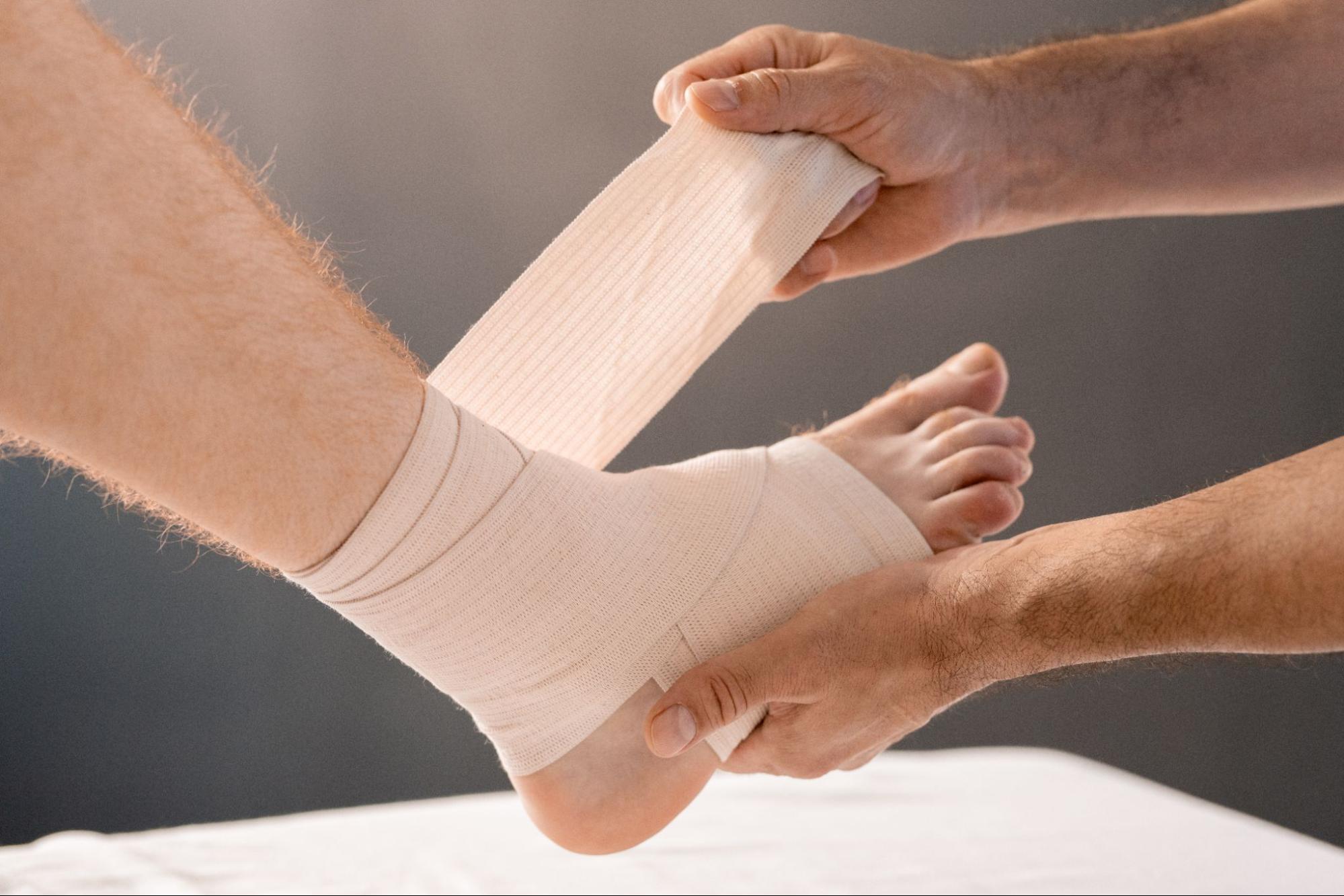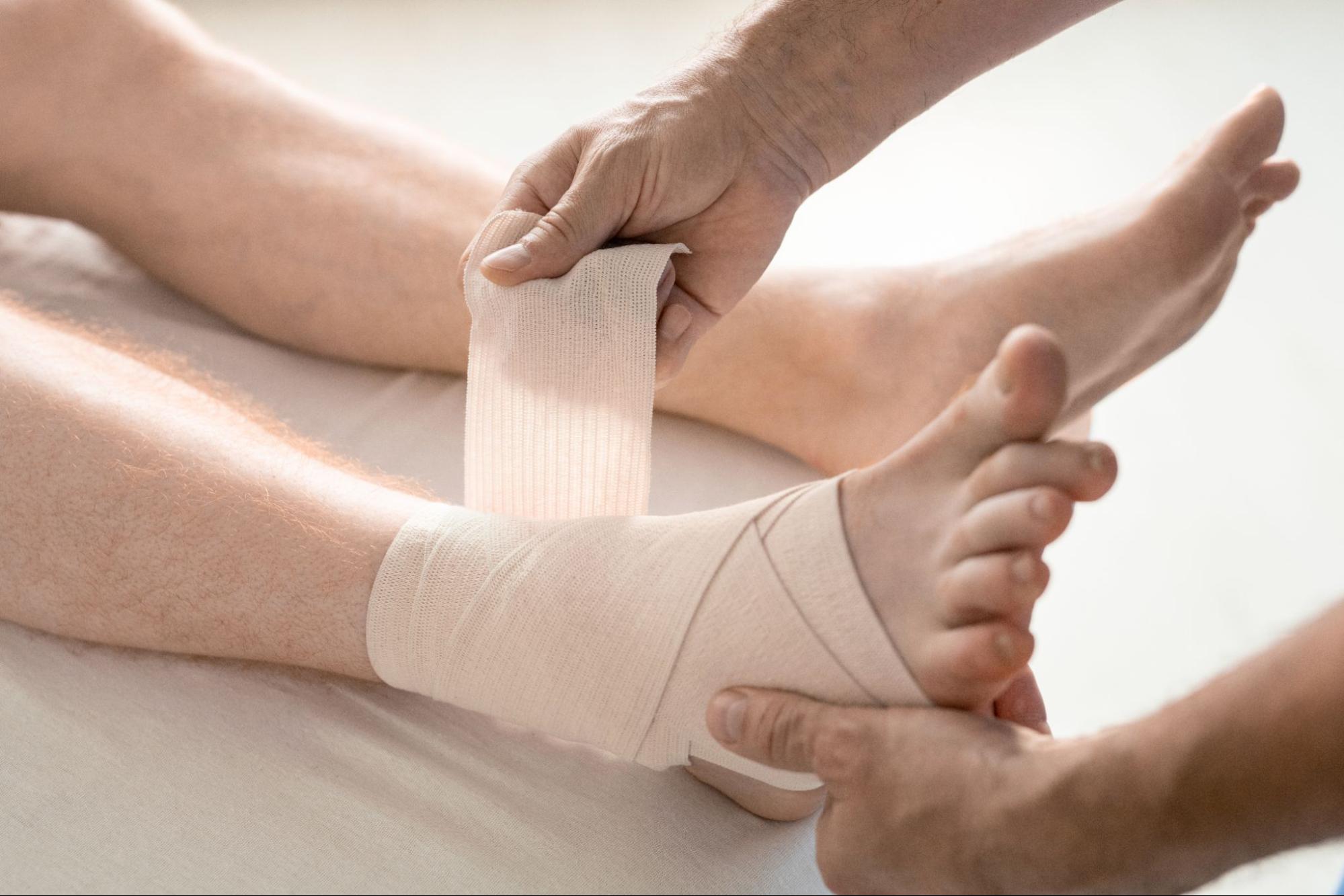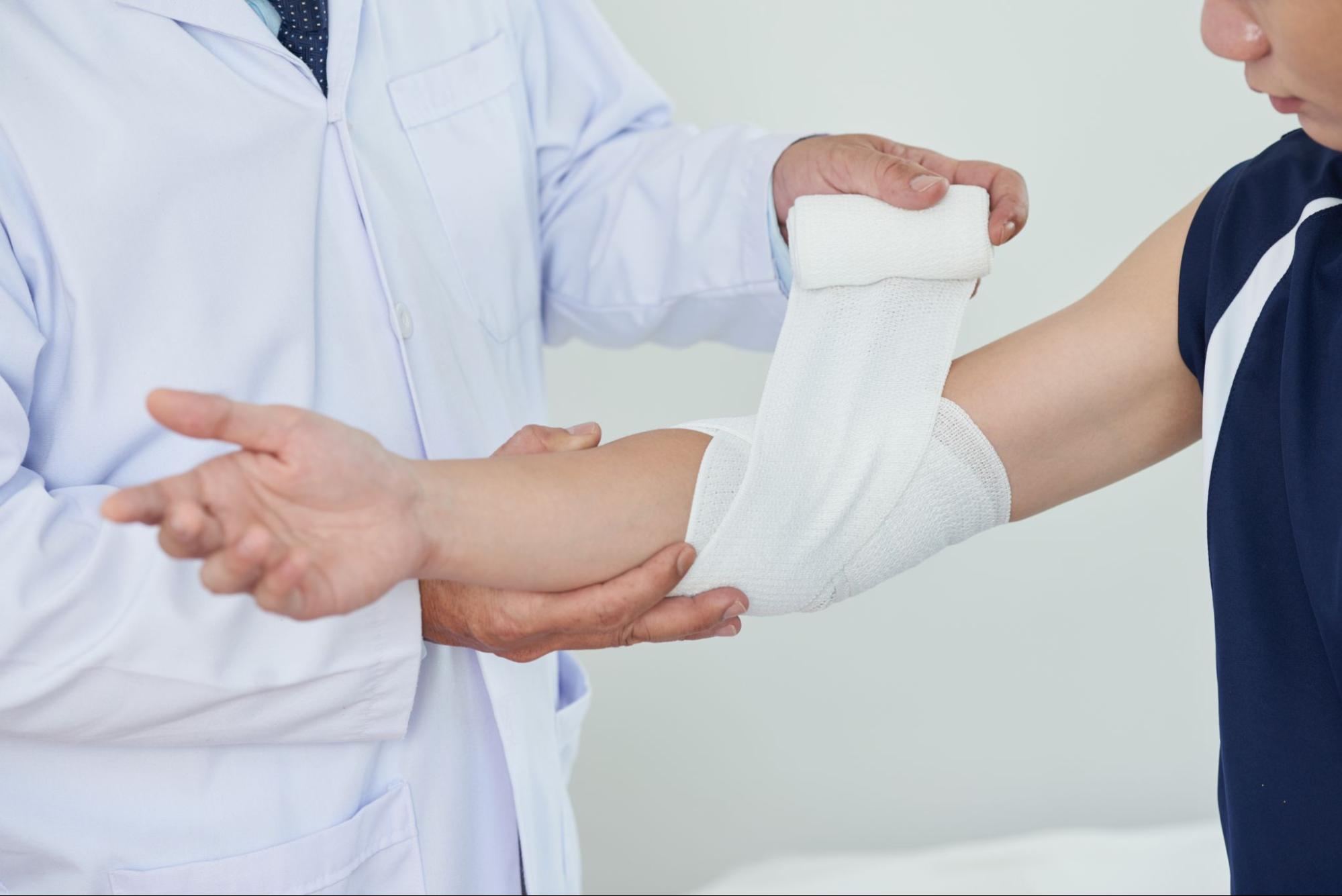
What is a Pressure Ulcer?
Pressure ulcers, commonly known as bedsores or pressure sores, are localized injuries to the skin and underlying tissue caused by prolonged pressure. These wounds often develop over bony areas such as the heels, hips, sacrum, and elbows, where sustained pressure restricts blood flow, leading to tissue damage. Pressure ulcers are a serious health concern, particularly among individuals with limited mobility, such as elderly patients, bedridden individuals, and wheelchair users. If left untreated, they can lead to severe complications, including infections and even life-threatening conditions like sepsis. Caregivers and healthcare providers must understand pressure ulcers, their causes, prevention strategies, and treatment options.
What Causes Pressure Ulcers?
Pressure ulcers develop when there is continuous pressure on the skin for an extended period, cutting off circulation. Several factors contribute to their formation, including:
Prolonged Pressure
When a person remains in the same position for too long, continuous pressure is exerted on certain body areas, particularly over bony prominences like the heels, hips, and sacrum. This compression restricts blood flow, starving the tissue of oxygen and leading to cell death. The longer the pressure persists, the greater the risk of severe tissue damage.
Shear and Friction
Shear and friction also play a significant role in pressure ulcer development. Shear occurs when the skin moves in one direction while the underlying bone remains stationary, creating tension in the blood vessels and causing damage deep beneath the skin’s surface. On the other hand, friction results from repetitive rubbing of the skin against a surface such as a bed or wheelchair. This constant irritation weakens the outer layer of the skin, making it more susceptible to breakdown, particularly in areas already vulnerable to pressure.
Moisture
Moisture can further exacerbate skin damage by softening and weakening the skin’s natural barrier. Sweat, incontinence, and wound drainage can create a damp environment, increasing the likelihood of skin breakdown and infection. Excess moisture, when combined with pressure or friction, significantly raises the risk of ulcer formation.
Poor Nutrition and Hydration
Poor nutrition and hydration can also contribute to pressure ulcer development. The body requires essential nutrients, including protein, vitamin C, and zinc, to maintain healthy skin and repair tissue damage. A nutrient deficiency can slow the healing process and make the skin more fragile. Similarly, dehydration reduces skin elasticity and resilience, making it more prone to injury.
Medical Conditions Affecting Circulation
Certain medical conditions that affect circulation can further increase the risk of pressure ulcers. Diseases such as diabetes, peripheral artery disease, and vascular disorders impair blood flow, making it harder for the body to deliver oxygen to the skin and fight infections. Individuals with these conditions may experience slower wound healing, increasing the likelihood of complications if a pressure ulcer develops.
The Stages of Pressure Ulcers
Pressure ulcers progress through four stages based on their severity:
Stage 1: Early Skin Damage
In Stage 1, the skin appears red or discolored and does not blanch (turn white) when pressed. Although the skin remains intact, the affected area may feel warm, firm, or tender. Pain or irritation is often present, signaling the beginning of tissue damage. At this stage, relieving pressure and improving circulation can help prevent the ulcer from progressing.
Stage 2: Partial-Thickness Skin Loss
By Stage 2, the ulcer has caused partial-thickness skin loss, affecting the outer layer (epidermis) and the underlying dermis. The wound may appear shallow, open sore, or a fluid-filled blister. Pain and discomfort become more pronounced, and the wound may begin to ooze. At this stage, proper wound care and protective dressings can support healing and prevent infection.
Stage 3: Full-Thickness Skin Loss
As the ulcer reaches Stage 3, the damage extends through all layers of the skin, reaching the subcutaneous fat layer. The wound is crater-like, and dead tissue (eschar) may be present. The risk of infection significantly increases as the body struggles to repair the deeper tissue damage. More advanced wound care techniques, such as debridement (removal of dead tissue) and specialized dressings, are often required to promote healing.
Stage 4: Deep Tissue Damage
In Stage 4, the most severe stage, the ulcer extends beyond the skin and fat layer, exposing muscle, tendons, or bone. The wound is deep and may have a significant amount of dead tissue. Due to the extensive tissue destruction, serious infections, such as osteomyelitis (bone infection) or sepsis, can develop, posing life-threatening risks. Wound healing at this stage is challenging and often requires surgical intervention, such as skin grafts or flap reconstruction, to close the wound and restore tissue integrity.
In addition to these four stages, some pressure ulcers are classified as unstageable if the wound is covered with dead tissue, obscuring the depth of the injury.
Who is at Risk for Pressure Ulcers?
Certain individuals are at a higher risk of developing pressure ulcers, including:
People With Limited Mobility
Bedridden patients, wheelchair users, and those with paralysis are at high risk due to prolonged pressure on certain areas of the body. Without frequent repositioning, circulation is restricted, leading to skin breakdown and ulcer formation.
Elderly Individuals
Aging skin becomes thinner and less elastic, making it more prone to damage from pressure and friction. Reduced collagen production also slows the healing process, increasing the risk of complications.
Patients With Chronic Illnesses
Conditions like diabetes, heart disease, and poor circulation impair blood flow, making it harder for the body to repair damaged skin. Weakened immune function further increases the risk of infection in pressure ulcers.
Malnourished Individuals
A lack of essential nutrients, such as protein, vitamin C, and zinc, weakens the skin’s structure and ability to heal. Poor nutrition also affects the immune response, making wounds more susceptible to infection.
People With Incontinence
Excess moisture from urine or feces weakens the skin’s protective barrier, increasing the risk of irritation and breakdown. Prolonged exposure to moisture, combined with friction, significantly raises the likelihood of developing pressure ulcers.

Preventing Pressure Ulcers
Prevention is crucial since pressure ulcers can be difficult to treat once they develop. Some key prevention strategies include:
Frequent Position Changes
For bedridden individuals, frequent repositioning is crucial to relieving pressure and preventing the formation of ulcers. Caregivers should assist in changing the patient’s position at least every two hours to distribute weight more evenly and reduce prolonged pressure on vulnerable areas such as the hips, heels, and sacrum. Wheelchair users should also shift their weight regularly, ideally every 15 to 30 minutes, to minimize continuous pressure on the same points. These small but essential movements improve circulation and help maintain healthy skin.
Using Support Surfaces
Specialized support surfaces, such as pressure-relieving mattresses, cushions, and foam padding, are vital in reducing the risk of pressure ulcers. These surfaces distribute weight more evenly, alleviating pressure on bony areas where sores commonly develop. Memory foam, air-filled cushions, and alternating-pressure mattresses can provide extra support, particularly for individuals who have limited mobility or are at high risk for developing skin breakdown. Investing in these aids can significantly improve comfort and ulcer prevention.
Keeping the Skin Clean and Dry
Maintaining proper skin hygiene is essential for preventing pressure ulcers. Regular bathing with mild soap helps remove dirt, bacteria, and irritants that can weaken the skin’s protective barrier. After cleansing, the skin should be dried thoroughly, as excess moisture can make it more susceptible to breakdown. Barrier creams and absorbent pads provide additional protection by shielding the skin from prolonged exposure to moisture caused by sweat, incontinence, or wound drainage. Keeping the skin clean and dry significantly reduces the likelihood of irritation and ulcer development.
Proper Nutrition and Hydration
A well-balanced diet plays a critical role in skin health and wound healing. Consuming foods rich in protein, vitamins, and minerals—particularly vitamin C and zinc—helps the body repair and maintain strong, resilient skin. Protein is essential for tissue regeneration, while vitamins and minerals support the immune system and promote faster healing. Additionally, staying well-hydrated ensures that the skin remains elastic and less prone to damage. Dehydration can lead to dryness and cracking, making the skin more vulnerable to breakdown.
Managing Incontinence
Proper management is essential for individuals who experience incontinence to prevent skin irritation and ulcers. Prolonged exposure to moisture, particularly from urine and feces, can weaken the skin and increase the risk of pressure sores. Absorbent briefs, catheters, or incontinence pads can help keep the skin dry and protected. Regular skin inspections and cleansing after exposure to moisture further reduce the chances of developing irritation or infections.
Inspecting the Skin Regularly
Routine skin checks are among the most effective ways to detect early signs of pressure ulcers before they worsen. Caregivers should examine the skin daily, looking for redness, warmth, or changes in texture that may indicate the beginning of tissue damage. Catching these warning signs early allows for timely intervention, such as repositioning, improved skin care, or additional pressure relief measures, preventing minor issues from developing into serious wounds. Regular skin inspections ensure that potential problems are addressed quickly, improving overall skin health and reducing complications.
The Role of Amniotic Grafts in Pressure Ulcer Treatment
For advanced pressure ulcers, particularly those in Stage 3 and Stage 4, traditional wound care methods may not always be sufficient to promote healing. In these cases, amniotic grafts have emerged as an effective treatment option. Derived from the amniotic membrane of the placenta, these grafts contain essential growth factors, cytokines, and extracellular matrix proteins that support wound healing, tissue regeneration, and inflammation control.
Amniotic grafts help accelerate cellular repair by creating a protective scaffold over the wound, encouraging new tissue growth and reducing pain and inflammation. Unlike synthetic or other biologic grafts, amniotic tissue is naturally anti-inflammatory, antimicrobial, and antifibrotic, which makes it particularly beneficial in preventing complications such as infection and excessive scarring. For patients with chronic, non-healing pressure ulcers, the use of amniotic grafts can significantly improve recovery outcomes and decrease the risk of severe complications like osteomyelitis or sepsis.
Complications of Untreated Pressure Ulcers
If pressure ulcers are not managed properly, they can lead to severe complications, including:
Infections
Pressure ulcers leave the skin vulnerable to bacterial infections like cellulitis, which can cause redness, swelling, and pain. If untreated, bacteria can enter the bloodstream, leading to life-threatening sepsis. In severe cases, infection can spread to the bone (osteomyelitis), requiring intensive treatment or surgery.
Tissue Necrosis
When a pressure ulcer is left untreated, the affected tissue can die due to prolonged oxygen deprivation. As necrosis spreads, it can lead to deeper tissue damage, increasing the risk of severe infections and further delaying wound healing.
Reduced Mobility
The pain and discomfort caused by pressure ulcers can make movement more difficult, leading to immobility. Limited movement exacerbates the risk of developing additional ulcers and weakens muscles and circulation, making recovery even more challenging.
Long-Term Hospitalization
Severe pressure ulcers, especially those that become infected or reach advanced stages, often require intensive medical care. Treatment may involve surgical intervention, specialized wound care, and extended hospital stays, increasing healthcare costs and the overall burden on the patient.

What is a Pressure Ulcer and How to Manage Them
Pressure ulcers are a serious but preventable condition affecting individuals with limited mobility. Early detection, proper skin care, adequate nutrition, and frequent repositioning play vital roles in prevention. If a pressure ulcer develops, timely treatment—focused on wound healing, pressure relief, and infection control—is essential to avoid complications. Whether you are a caregiver, healthcare provider, or someone at risk, understanding how to manage and prevent pressure ulcers can improve overall well-being and quality of life.
Visit Stem Health Plus LLC blog for more expert insights and the latest advancements in wound care. Their resources provide valuable information on preventive strategies, cutting-edge treatments, and practical solutions for managing pressure ulcers and other chronic wounds.
